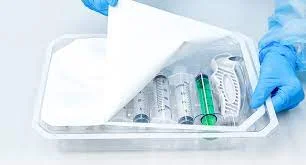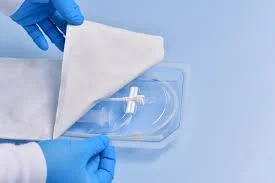In the medical field, ensuring the safety and integrity of healthcare products is of utmost importance. Medical packaging plays a critical role in preventing contamination and maintaining the efficacy of pharmaceuticals, medical devices, and other healthcare products. Hanhui New Material, a leading manufacturer of medical packaging solutions, understands the significance of reliable packaging in safeguarding patient health. In this blog, we will explore the essential role of medical packaging in preventing contamination and ensuring the highest standards of patient care.
I. Barrier Protection
Microbial Contamination:
Medical packaging serves as a barrier against microbial contamination, preventing the entry of bacteria, viruses, and other harmful microorganisms. This is particularly crucial for sterile medical products, such as surgical instruments, implants, and injectable medications. Packaging materials with high barrier properties, such as multilayer films or laminates, effectively inhibit the transmission of microorganisms.
Environmental Contamination:
Medical packaging also protects healthcare products from environmental contaminants, such as dust, moisture, and light. These contaminants can compromise the stability and efficacy of medications and medical devices. By providing a protective shield, packaging ensures that products remain intact and safe until they reach the end-user.

II. Tamper Evidence and Product Integrity
Tamper-Proof Packaging:
Medical packaging incorporates tamper-evident features, such as seals or indicators, to provide visible evidence of any tampering attempts. Tamper-proof packaging helps maintain the integrity of healthcare products, assuring patients and healthcare providers that the contents are safe and untampered with.
Product Shelf Life:
Properly designed and manufactured medical packaging helps extend the shelf life of healthcare products. Packaging materials with oxygen and moisture barrier properties protect sensitive medications from degradation caused by exposure to air or humidity. This ensures that the products retain their potency and effectiveness throughout their intended shelf life.
III. Sterilization Compatibility
Sterile Barrier Systems:
Medical packaging serves as a sterile barrier system, ensuring that sterile products remain uncontaminated until they are ready for use. Packaging materials compatible with various sterilization methods, such as steam, ethylene oxide, or radiation, are essential to maintain sterility. Hanhui New Material specializes in producing medical packaging that withstands the rigors of sterilization processes, providing reliable protection against contamination.
Sterile Medical Devices:
Medical devices, such as surgical instruments or implants, require packaging that not only protects them during transportation and storage but also allows for easy aseptic presentation in the operating room. Packaging solutions, including peel pouches or trays, are designed to maintain sterility and facilitate aseptic handling, reducing the risk of contamination during surgical procedures.

IV. Labeling and Information
Product Identification:
Medical packaging includes clear and accurate labeling to identify the contents and provide essential information, such as product name, dosage, expiration date, and lot number. Proper labeling ensures that healthcare providers can easily identify and track the products, minimizing the risk of administering the wrong medication or using expired products.
Patient Safety Information:
Packaging also plays a crucial role in providing patient safety information, such as dosage instructions, potential side effects, and storage requirements. Clear instructions and warnings on the packaging help patients or caregivers understand and follow the prescribed treatment correctly, reducing the risk of medication errors or adverse events.
V. Environmental Considerations
Sustainable Packaging Solutions:
In addition to preventing contamination, medical packaging also addresses environmental concerns. Hanhui New Material focuses on developing sustainable packaging solutions that minimize waste and environmental impact. This includes using recyclable materials, reducing packaging size and weight, and implementing eco-friendly manufacturing processes.
Disposal and Waste Management:
Proper disposal of medical packaging, especially for items contaminated with potentially hazardous substances, is crucial to prevent environmental contamination. Packaging materials that are easily identifiable, separable, and compatible with recycling or waste management processes contribute to responsible disposal practices.

Conclusion
Hanhui New Material recognizes the vital role of medical packaging in preventing contamination and ensuring patient safety. By providing barrier protection, maintaining product integrity, facilitating sterilization compatibility, offering clear labeling and information, and incorporating sustainable practices, medical packaging plays a crucial part in the healthcare industry. Through continuous innovation and commitment to quality, Hanhui New Material contributes to the advancement of medical packaging, enabling healthcare providers to deliver safe and effective treatments to patients while maintaining the highest standards of contamination prevention.





